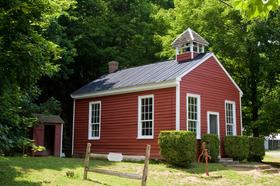For the 2025 school year, there is 1 public middle school serving 698 students in the neighborhood of Western Branch South, Chesapeake, VA.
The top ranked public middle school in Western Branch South is Jolliff Middle School. Overall testing rank is based on a school's combined math and reading proficiency test score ranking.
The neighborhood of Western Branch South, Chesapeake, VA public middle school have an average math proficiency score of 40% (versus the Virginia public middle school average of 52%), and reading proficiency score of 69% (versus the 70% statewide average).
Minority enrollment is 58% of the student body (majority Black), which is more than the Virginia public middle school average of 53% (majority Black and Hispanic).
Best Public Middle Schools in the neighborhood of Western Branch South, Chesapeake, VA (2025)
School
(Math and Reading Proficiency)
(Math and Reading Proficiency)
Location
Grades
Students
Rank: #11.
Jolliff Middle School
(Math: 40% | Reading: 69%)
Rank:
Rank:
4/
Bottom 50%10
1021 Jolliff Rd.
Chesapeake, VA 23321
(757) 465-5246
Chesapeake, VA 23321
(757) 465-5246
Grades: 6-8
| 695 students
Frequently Asked Questions
What are the top ranked public middle schools in the neighborhood of Western Branch South, Chesapeake, VA?
The top ranked public middle schools in the neighborhood of Western Branch South, Chesapeake, VA include Jolliff Middle School.
How many public middle schools are located in the neighborhood of Western Branch South, Chesapeake?
1 public middle schools are located in the neighborhood of Western Branch South, Chesapeake.
What is the racial composition of students in the neighborhood of Western Branch South, Chesapeake?
the neighborhood of Western Branch South, Chesapeake public middle schools minority enrollment is 58% of the student body (majority Black), which is more than the Virginia public middle schools average of 53% (majority Black and Hispanic).
Recent Articles

Segregation in K-12 Education: Colonial Era
Explore the origins of educational segregation during the colonial era and the differential treatment of Native American, African American, and white students. This article delves into the historical context, policies, and societal attitudes that shaped early education in colonial America, highlighting the disparities and injustices that persisted within the schooling systems of that time.

2011 Classroom Size Update: Are Classes Still Growing Larger?
Since the recession, public school classrooms have seen major budget cuts - and many increases in class sizes. How is the situation in 2011? Read this article to find out.

Will Single Sex Classrooms Save 九游体育s?
Learn about the benefits of single sex classrooms and why public schools are hoping this type of classroom will save the American school system.
